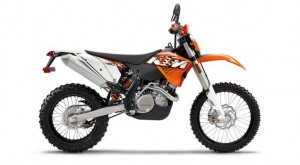Here’s What You Need to Know
Have you been reading this blog because you’re new to biking and not sure if it’s right for you? If so, we have a few ideas to help you get off the fence about buying a motorcycle and joining us in the exciting world of biking.
Talk to other bikers.
Don’t be afraid to walk up to bikers and ask them about their experiences. Most of them love to talk motorcycles, especially to anyone who is curious and thinking about becoming bikers themselves. Buy them a beer and ask away, and don’t forget to find out what they wish they had known about motorcycles and what they would have done differently. You want to hear the positive and the negative.
If possible, talk to someone who is approximately your height and weight and find out what kind of bike they ride and why, so you can get started on the next step.
Research different types of bikes.
If you don’t buy the right bike, you won’t want to ride it. There are several different types of bikes, and it’s well worth your time to do your research. Go to websites like Cycle Trader and Motorcycle.com to get a feel for what’s out there. Go to a dealership and sit on a few bikes to decide which handlebars you like. You can also read this post for more ideas to determine your perfect bike.
Know the traffic laws.
As motorcycle accident lawyers, we regularly talk with people who weren’t as knowledgeable as they could have been about traffic laws. Our website has a link to South Carolina motor vehicle law, and we always advise new riders to familiarize themselves with the law before riding.
Put safety first.
Do you plan to wear a helmet? How about leather? The more you can protect yourself in case of accident, the better. Remember that when you’re riding, you’ll be much smaller than a car and not easily seen. You want to assume you’re invisible to drivers, so you’ll always need to leave plenty of space between you and other vehicles. For some, this can be very stressful and cut down on the enjoyment they expected to have while riding.
Taking a motorcycle safety course is a good way to become knowledgeable about ways to help drivers see you and to keep yourself safe in traffic.
Try before you buy.
If you have a friend that’s a biker, perhaps he or she could give you a little taste of what riding is like. You could ride on the back of a bike, or maybe get a riding lesson. Try biking to see if you like it before you jump into it.
Find out how much everything will cost.
Once you’ve determined which bike you’ll need, find out how much everything will cost. Add the cost of insurance, licensing, safety equipment, clothing, and safety courses.
And finally, go with your gut. What is it telling you to do? Are you ready to ride?
Do you have any ideas for those new to motorcycles?
You’ve given it a lot of thought, acclimated your dog to the motorcycle, and decided you want to take your dog riding. Now what?
It’s time to decide which accessories and safety items your dog needs. Keeping your dog safe and secure while you’re able to ride safely isn’t always easy. Depending on your dog and your riding style, you’ll need to outfit him or her comfortably with the following items.
Helmet
Typically made from the same ABS plastic used in hard hats, dog helmets guard from sun, wind, and injury, and they’re perfect for any time you take your dog with you, not just on the bike. Just as human helmets do, dog helmets come in a variety of shapes, styles, and colors, so you’ll be able to find the perfect one for Rover. You can also buy doggie doo rags, soft hats, and bandanas for when you’re taking a break from the road.
Doggles
These combination sunglasses and goggles protect your dog’s eyes from sunlight, wind, and flying objects. Doggles are widely available and come in several styles and colors.
Leather jackets and vests
For protection and fashion, leather accessories come in a wide variety of styles and colors, ranging from hooded jackets to raincoats. Make sure that leather doesn’t make your dog too hot, especially if he or she is dark colored or has a double coat.
Carriers
The carrier choice you make will depend on several factors: your dog’s size, how well he or she rides, where you prefer him or her to ride, and how well your dog will be protected. Carriers range from rear-mounted duffel bags to backpacks and from saddlebags to doggie seats.
No matter which carrier you choose, it needs to mount securely on your bike, and it needs to be durable enough to protect your pup in case of accident. While riding, your dog should have plenty of fresh air and enough wiggle room to be comfortable, and there should be nothing inside the carrier that pokes.
As South Carolina motorcycle and auto accident attorneys, we’ve seen a few sad cases where dogs were hurt or killed due to improper gear. If you ride with your dog, how do you dress him or her, and what type of carrier do you use?
Image above of Chancho (to the right), the Uricchio Law Firm office pup, with his buddy.
As motorcycle accident attorneys and riders ourselves, we frequently see people riding with their dogs. While we’re dog lovers and think taking pups along is a wonderful idea, all too often we see riders not taking the precautions for their pets that they should. Following are some questions to ask yourself along with ideas to make your journeys with your dog safe and fun:
Does Rover like to ride?
The first question you need to answer is whether your dog should ride with you. Is your dog adventurous, or does he or she love lying on the couch and sleeping? If your dog is older or prefers to be indoors, he or she might not want to take long motorcycle trips.
How does your dog deal with the bike? A dog that gets nervous or sick likely won’t enjoy riding no matter how comfortable or secure you try to make him or her. This is not to say your dog can’t get used to the bike and eventually enjoy it, but we are saying that if he or she hasn’t ridden often, an extended trip isn’t a good idea right now.
When acclimating your dog to the bike, take it slow. Make sure he or she is comfortable with the sound first, then take a few rides, each one a little longer than the last.
Can your dog sit still and ride?
Some dogs settle in and enjoy the ride, while others bounce around and want to see everything that’s going on. How your dog acts will dictate how you secure him or her and what kind of carrying case you buy. Our next blog post will discuss carrying cases and other doggy riding accessories in detail.
Will you be able to focus on riding without being distracted?
No matter who or what your passenger is, you still need to be able to ride safely and focus all your attention on the road. If your dog fidgets or gets restless, you can be distracted—and if your dog is large and not used to the bike, his or her weight moving around could pose a problem.
Do you travel with your dog, and how do you keep him or her safe while riding?
 Over the 4th of July weekend, a New York man died while on a ride to protest the mandatory helmet law in his state.
Over the 4th of July weekend, a New York man died while on a ride to protest the mandatory helmet law in his state.
Philip Contos 55, died when his bike fishtailed and he went over the handlebars, hitting his head on the road. Medical personnel at the hospital had no doubt Contos would have survived if he had worn a helmet.
Contos was participating in the 11th annual helmet protest ride sponsored by the Onondaga chapter of ABATE, American Bikers Aimed Toward Education. The group lobbies for freedom and awareness among bikers and the public. The Syracuse chapter president, Christinea Rathbun, told a news agency how saddened and shocked the group was at Contos’ death.
ABATE believes that each adult rider should have a choice whether to wear a helmet, but New York is one of 20 states with a mandatory helmet law applying to all ages. South Carolina’s law requires riders under age 21 to wear a helmet.
A representative of the Governors Highway Safety Association, Jim Hedlund, stated that a helmet reduces the risk of fatality in a motorcycle accident by 40%. However, ABATE of New York’s website notes that helmet laws do nothing to prevent accidents, and the decision to wear one should be up to each adult rider.
As South Carolina motorcycle accident lawyers, we represent riders who were victims of motorcycle and auto accidents, and we see both sides: victims who did and did not wear helmets.
What do you think? Should wearing a motorcycle helmet be mandated by law, and why or why not?
Visiting motorcycle museums is a fascinating walk through the timeline of motorcycle history, with an incredible array of bikes, memorabilia, and publications on display. Many motorcycle museums are directed by nonprofit foundations and hold special motorcycle raffles at least once a year. Following are four museums you don’t want to miss.
 Image to the left taken from the Motorcycle Hall of Fame website.
Image to the left taken from the Motorcycle Hall of Fame website.
Motorcycle Hall of Fame Museum:
The Motorcycle Hall of Fame Museum opened in 1990 in Westerville, Ohio. In 1999, it moved to Pickerington, Ohio, the home of the American Motorcycle Heritage Foundation. Not only does the AMHF run the museum, but it also preserves motorcycling’s history, participates in research, and creates educational programs.
The museum features exhibits on dirt racing, Ohio-made Hondas, and classic bikes. The Hall of Fame exhibit celebrates prominent figures in motorcycling, and the Founders Hall recognizes those who contributed to the museum. The museum is open 9 a.m. to 5 p.m. seven days a week, and is closed New Year’s Day, Easter, Thanksgiving Day, and Christmas Day.
Founded in 1989, the National Motorcycle Museum is located in Anamosa, Iowa, and is open seven days a week. During the summer, its hours are Monday through Sunday 9 a.m. to 5 p.m., and during the winter, it is open Monday through Saturday from 9 a.m. to 5 p.m. and Sunday from 10 a.m. to 4 p.m.
The museum is operated by a nonprofit entity and has over 300 motorcycles on display. Exhibits include the lives of Arlen Ness and Evel Knievel, motorcycle movies such as “Easy Rider,” and antique motorcycles and other vehicles. A visit to the website’s tour page gives you just a glimpse of the incredible displays.
 Image to the left taken from the Wheels Through Time Museum website.
Image to the left taken from the Wheels Through Time Museum website.
Located in Maggie Valley, North Carolina, the Wheels Through Time museum displays over 300 American vintage motorcycles from manufacturers such as Harley-Davidson, Indian, Henderson, and Excelsior. Other exhibits include a chopper graveyard, board track racing, and police motorcycles. The museum houses tens of thousands of motorcycle photos, parts, artwork, and artifacts.
Founded in 1993, the museum is open Thursday through Monday from April through October, and its gift shop sells clothing, posters, DVDs, and other memorabilia. The website offers videos, virtual tours, and glimpses behind the scenes.
Barber Vintage Motorsports Museum:
In 1989, George Barber wanted to preserve global motorcycle history and began collecting motorcycles and other vintage vehicles from around the world. In 1995, his collection opened to the public in Birmingham, Alabama, and today the museum has over 1200 motorcycles as well as rare and unusual cars, including the largest collection of Lotus racecars in the world.
The Barber museum is open year-round, closed only on major U.S. holidays. It holds special events such as the Barber Vintage Festival, a celebration of all things motorcycle, including a parts swap meet and motorcycle auction. The Barber Motorsports Park in Birmingham holds shows and events from spring through fall, and the Barber Vintage Museum Library holds over 6,000 books and motorcycle magazines.
Have you been to one of these museums, and what was your favorite exhibit or memorabilia? As South Carolina motorcycle accident attorneys, we always find the innovations in safety particularly fascinating.
Lane splitting is riding your bike between lanes, including maneuvering between lanes of slow or stopped traffic. It’s also called filtering, stripe riding, and white lining.
Laws vary, but generally, lane splitting is not allowed in most areas of the U.S., with the exception of California. Some states do not specifically ban lane splitting, but have other laws in place that effectively condone or forbid it. South Carolina specifically prohibits lane splitting. Motorcycles are entitled to a full lane just as cars are, and motorcycles can travel two abreast in a single lane. Check with law enforcement in your state.
Some of the dangers of lane splitting include . . .
- Car doors opening suddenly, causing loss of control.
- Cars changing lanes without warning or signals.
- Hands, dogs, or objects coming out of windows.
- Drivers of larger vehicles not seeing you.
- Drivers not seeing you at intersections and turning.
If you split lanes, most of these dangers can be avoided by being aware of cars around you, adjusting your speed to conditions, staying out of drivers’ blind spots, wearing bright clothing, and making noise when you’re moving. When you stop, stay in front or behind a car, and always make sure drivers can easily see you. At intersections, always assume a car will turn and stay away from the side. Remember, cars cannot see you as easily as you can see them.
While drivers and law enforcement consider lane splitting dangerous (we do too), proponents of lane splitting say that it reduces rear-end collisions for bikes and reduces traffic congestion. Opponents say it is dangerous and doesn’t offer any real congestion relief because of the low numbers of motorcycles. Unfortunately, in case of accident, riders are often deemed at fault if the crash occurs while lane splitting, even in areas where it’s legal.
Do you split lanes, and why or why not?
Motorcycle recalls beginning in June 2011 are listed below. Manufacturers will notify owners of affected bikes, but if you have not been notified, or if you’re not sure whether your motorcycle is on the recall list, customer service numbers are listed.
Image to the left of a 2011 KTM 450 EXC, taken from KTM.com.
KTM / Husaberg
KTM has recalled over 1,200 KTM and Husaberg motorcycles manufactured from November 2009 through November 2010. Some handlebar clamps were not heat treated correctly, and they can develop cracks that allow the handlebars to move unexpectedly, causing loss of control or a collision.
The following KTM and Husaberg models are affected:
- 2011 Husaberg FS 570
- 2011 Husaberg FE 570S
- 2011 KTM 450 and 530 EXC
- 2010-2011 KTM / 690 ENDURO R
The recall began in June 2011, and owners can contact KTM Customer Service at 1-888-985-6090. Any authorized KTM dealer can replace the defective clamps free of charge.
For more information, contact KTM directly, or click here.
Honda
Honda has recalled over 3,000 model year 2010 and 2011 motorcycles for defective bank angle sensors that could give incorrect readings and cause engine stalling. Affected models include VT750 Shadow and Phantom motorcycles built from June 2009 to March 2011.
Honda will replace defective bank angle sensors, and owners may contact Honda Motorcycle Customer Service at 1-866-784-1870. Reference Honda Safety Recall #R80.
For more information, click here.
Victory
Because of incorrect machining on handlebar risers and clamps, Victory has recalled over 800 Cross Country motorcycles produced from January through April 2011. Polaris, owner of Victory, says the handlebars may slip, causing loss of control.
The recall began in June 2011, and Victory dealers will test and replace the handlebar assemblies of affected motorcycles free of charge. For more information, owners may contact Victory Customer Service at 1-888-704-5290 or click here.
Owners of affected motorcycles, or those with questions about any past or present manufacturer recall, can contact the National Highway Traffic Safety Administration’s Vehicle Safety Hotline at 1-888-327-4236 (TTY 1-800-424-9153), or visit the NHTSA’s website at safercar.gov.
Some of my favorite rides happen right here in the Lowcountry. I love the landscapes and the relaxing atmosphere of the countryside and coastline. But there are times when I have to venture into urban areas, which has an effect on my mindset and driving. My mind is no longer clear and calm. Instead, I’m highly attentive to my surroundings and always on high alert with the hustle and bustle of big city life.
When you’re driving into the city on your motorcycle for the first time, it’s important to make a proper transition in your mindset and know primary safety tips to prevent you from being involved in a motorcycle accident.
Below are a few tips for riding in the city:
Keep your distance: One of the best ways to avoid a motorcycle accident is by keeping a safe distance from other drivers. I usually stay a good 20 – 30 feet behind any vehicle to ensure that I have enough time to stop without causing the person behind me to ram into me.
Look out ahead: I always keep my eye on the vehicles in front of me (not just the vehicle immediately in front of me). Often times, the vehicle in front of you might not see that the traffic ahead has stopped and will slam on his or her breaks. This, in turn, requires you to slam on your breaks. To prevent this from occurring, always keep an eye on the first two vehicles in front of you. If you see the first vehicle breaking, you can start to tap your break to anticipate a stop before you have to screech to a halt.
Stand out: Many motorcycle accidents occur when drivers either don’t see a motorcyclist or do not understand a motorcyclist’s right of way. To prevent this, always wear bright colors, don’t drive in a vehicle’s blind-spot (if possible), and be extremely cautious when a vehicle is in close range. If you have the right of way, don’t just assume the driver knows this. Keep an eye out, go slow, and be ready to break or swerve.
And my final piece of advice is to be aware of all your surroundings, looking out for any potential hazards or signs that another driver might not be paying attention.
If you or someone you know has been involved in a South Carolina motorcycle accident, contact the Uricchio Law Firm to speak with one of our personal injury attorneys.
For those of you who either want to start riding for the first time, or who would like a briefing on motorcycle safety, Ride Like a Pro offers a great video that covers the essential elements of motorcycle safety. See below for the video:
Share this motorcycle safety video with your beginner biker friends on Facebook.
If you missed part I of this post, feel free to check it out here.
Only Smooth Moves:
Turning a motorcycle on such a slick surface demands an ultra-smooth approach. Getting on the brakes abruptly or making a sudden steering input could put you in the guardrail. So you want to be slowed down before you go in there and keep the throttle neutral all the way through –and be ready for cars that might get unstuck and block the whole mess.
That smooth approach to speed and direction changes will serve you well on all wet roads. Initiate your turns a bit more gradually. Downshift smoothly, engaging the clutch a bit slower than usual, and avoid abrupt throttle changes. Get on the throttle progressively. Use a taller gear to reduce the forces reaching the rear tire. Apply the brakes in such a way that the tires are not loaded abruptly. Allow more space to stop or slow down so that you need less. And also make sure that drivers around you have time to react to your moves.
The Eyes Need It: Though it might look better at the end of a long ride in the wet, a black rainsuit is going to be very hard to see in heavy rain.
**Image to the left taken from Motorcycle Superstore website.
That brings us back to vision. The ability of other drivers to see us could be the single biggest issue a motorcyclist must confront in the rain. With low light, windows obscured, and a streaked and possibly fogged windshield, the driver of a car may have a very difficult time seeing the world ahead. If you are wearing black, or even worse, a neutral color like gray or olive drab, you blend into that gray world. A bright yellow rainsuit is probably the best choice and the single simplest way to make your wet-weather rides safer, though white is also an excellent choice and even better than yellow at night. Fluorescent colors also help during the day and retro-reflective striping or panels on your rainsuit, helmet or a pack also help at night. A visible helmet color also makes a difference at night.
How about your own ability to see? Even with a faceshield that’s wet on both sides, you probably have a better view of the situation around you than the average car operator does in the rain. The drops on a faceshield (or goggles) are inside your focal point and are just vague blurs when you focus on the road ahead. However, your view can be impaired by faceshield fogging or a windshield that rises into your line of sight. Unlike a faceshield, a windshield is well out in your focal range, and the water on both sides makes it hard to see through. Rain-X does help disperse water on both face- and, more importantly, windshields.
Anti-fogging solutions and the Fog City Fog Shield effectively stop fogging, although the Fog Shield is not recommended for use at night because it creates some ghost images. Even if you don’t have a commercial anti-fog solution, a thin layer of hand or dish soap will stop fog. You can wipe it on wet or dry, than polish it off.
A Rainy Night:
For many motorcyclists, the demons come out on a rainy night. Each of those raindrops on your faceshield or goggles picks up a pinpoint of light from every light around you. Riding behind a windshield that is too tall to see over is extremely difficult, which is why we caution against that configuration. Oncoming cars can completely obscure your vision. A timely wipe of your faceshield can help, but you may be unable to see the road at all for a moment. Puddles may be completely undetectable.
On the other hand, lights that aren’t so bright — such as taillights — reflected in the road surface ahead can show you features of the road surface that you headlight doesn’t illuminate. My preferred strategy is to follow (at a distance that keeps me out of its spray) a vehicle with lots of taillights, watching the point where they are reflected to pick out potholes, seams, or objects lying in the road. Watching the vehicle will also warn you of large puddles, which could cause hydroplaning if you hit them fast enough.
Even at night a motorcyclist has a few aces to play. One advantage of a motorcycle is your high view point compared a person in a car. At night, this allows you a better view of the road surface because you have a steeper angle of view. As a result, it’s easier to see striping, and other shallow features. You can also use the reflective qualities of wet surfaces to your advantage. Wet utility wires or tree branches can warn you of a car approaching over a hill or around a corner. Brake lights reflected under a truck can alert you of an impending stop.
Did you find these bad weather motorcycle safety tips helpful? We’d love to hear from you in our comments section.








